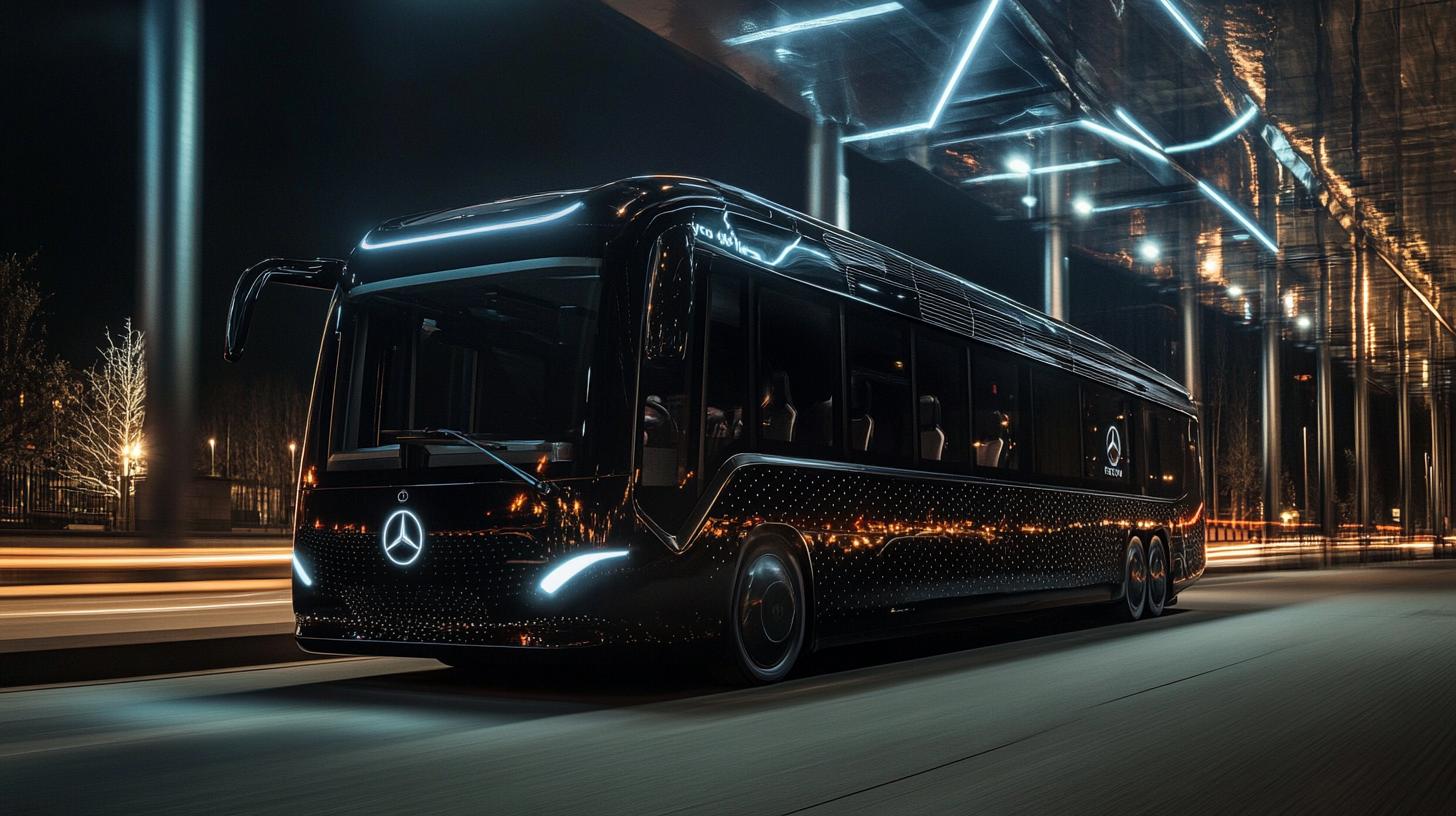Daimler Buses Expands eCitaro Lineup with New Urban Champion
Daimler Buses has launched a new compact bus, the Mercedes-Benz eCitaro K, specifically designed for the bustling streets and historic areas of cities. This sleek low-floor model measures 10.63 meters in length, boasting a nimble 17.28-meter turning radius that makes it perfect for navigating tight urban spaces.
Uncompromised Versatility
Despite its smaller size, the eCitaro K promises the same performance as its larger counterparts, capable of accommodating up to 84 passengers with its 4,398 mm wheelbase. Its flexibility extends to its battery configuration, offering 4 to 6 battery modules with a top capacity of 588 kWh. Under ideal conditions, the bus can travel up to 400 kilometers on a single charge, with the possibility of extending the range to 500 kilometers using advanced NMC4 batteries.
Efficient Power and Safety Features
Charging the eCitaro K is straightforward, allowing use of a charging port with up to 150 kW or a pantograph that can handle up to 300 kW. The bus is powered by a ZF AVE 130 portal axle delivering 2×125 kW of power and a torque of 2×485 N-metre.
Safety remains paramount, as the model is equipped with cutting-edge systems like Sideguard Assist 2 for monitoring blind spots and Frontguard Assist for detecting obstacles. Drivers can also rely on enhanced speed, tire pressure, and fatigue monitoring systems.
The eCitaro K model not only embodies efficiency and practicality but also sets a new standard for urban mobility in its class.
Unveiling the Future: How the eCitaro K Is Shaping Urban Transport
As cities expand and traffic density increases, the necessity for innovative public transport solutions becomes ever more pressing. Enter the latest in urban mobility: the Mercedes-Benz eCitaro K. While its compact design is a highlight, there are numerous unexplored facets of this electric bus that could redefine urban transportation and influence technological advancements in the automotive industry.
Advancing Urban Mobility: A Technological Leap
The Mercedes-Benz eCitaro K’s adaptability extends beyond mere size. The shift towards fully electric buses like the eCitaro K prompts critical questions about the role of electric mobility in shaping sustainable urban futures. Electric buses dramatically decrease urban emissions, with zero tailpipe emissions contributing to cleaner city air, a pressing demand as urban pollution levels rise. Furthermore, the transition could drastically reduce noise pollution, fostering quieter cityscapes and improving urban living quality.
Hidden Advantages and Unseen Challenges
One of the significant advantages of the eCitaro K lies in its modular battery systems. This design allows cities to adapt energy configurations based on specific route needs, optimizing energy usage and reducing wastage. However, with electric technology still evolving, the question arises: will the current infrastructure effectively support these advancements? Cities must invest in robust charging infrastructures to leverage this technology fully, a challenge that requires careful planning and substantial investment.
Could This Be the Future of Urban Transport?
How does the eCitaro K’s adaptability play into future transport trends? With autonomous technology on the horizon, the eCitaro K could serve as a foundational model for driverless public transport, utilizing its advanced safety systems. Yet, this transition must consider job impacts in the transport sector.
From a logistical perspective, how will such technology influence city planning and traffic management? The nimble eCitaro K could pave the way for smarter routing and dynamic scheduling in urban areas, potentially reducing congestion during peak times.
Controversies and Considerations
As cities embrace electric transport, debates surge concerning the environmental cost of battery production and disposal. The potential rise in demand for lithium and cobalt could have far-reaching ecological and geopolitical consequences.
Which technology should prevail to solve these impending crises? Advancements in alternative battery chemistries, such as solid-state batteries, could provide answers. However, these technologies require further development before they can be implemented on a large scale.
The Path Forward
Daimler Buses’ eCitaro K represents a small but significant step toward reimagining public transit. While these electric buses offer promising benefits, they also raise critical discussions around infrastructure, resource management, and technological progression.
To explore more about the eco-friendly advancements spearheaded by Daimler Buses, visit their main website: Daimler. As the landscape of urban mobility continues to evolve, it is clear that the choices we make today will chart the path for tomorrow’s cities.






















